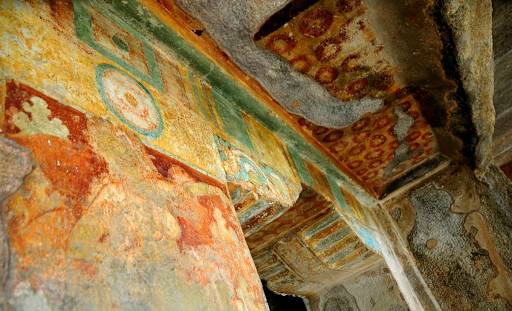Sittanavasal
Why in News:
- It is a small village in Pudukottai district of Tamil Nadu and a major centre of Jain influence for 1,000 years just before the Christian era. At least three-fourths of the art is already damaged.
About

- Sittanavasal is the name used synonymously for the hamlet and the hillock that houses the Arivar Kovil (temple of Arihats – Jains who conquered their senses), ‘Ezhadipattam’ (a cavern with 17 polished rock beds), megalithic burial sites and the Navachunai tarn (small mountain lake) with a submerged shrine.
- Sittanavasal is considered by historians to be one of the oldest inhabited areas in the district, and a major centre of Jain influence.
What is the art technique used?
- The artwork on the ceiling of the sanctum and the ardha mandapam of Arivar Kovil is an early example of post-Ajanta cave paintings of the fourth to sixth centuries, done using the fresco-secco technique (a process that dispenses with preparation of the wall with wet plaster).
What is represented?
- The ceiling paintings show ‘bhavyas’ (exalted souls who work to achieve moksha or spiritual liberation) enjoying themselves in a pool, full of blooming lotuses.
- Faint outlines linger of dancing girls on the ‘ ardha mandapam’ pillars.
- The pillars of the verandah (added by the Maharaja of Pudukottai at the instance of then Diwan Alexander Tottenham in the 1900s), were brought from Kudumiyanmalai.
Languages used
- Sittanavasal remains an important place to study the history of Jainism and the inscriptions are in Brahmi and ‘ vattaezhuthu’.
What are the colours used?
- The colours are a mixture of plant dyes and mineral elements such as lime, lamp black, and clay pigments such as ochre for yellow and terre verte for the greyish-green tints.
Reference:
Subscribe
Login
0 Comments
